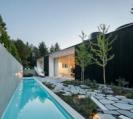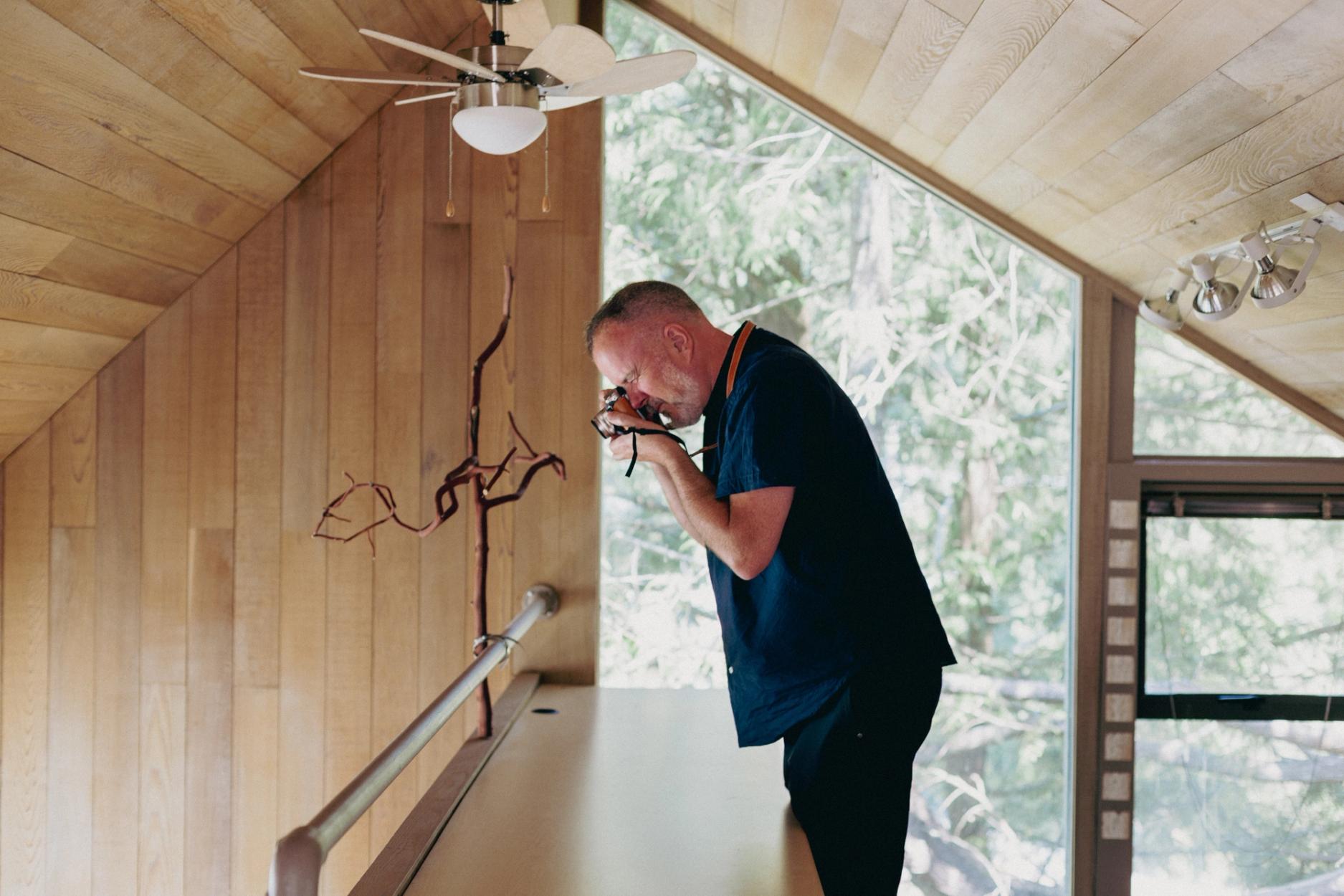Reviving a masterpiece: BattersbyHowat recount updating Arthur Erickson’s Eppich House

Arthur Erickson’s 1972 Helmut and Hildegard Eppich house in West Vancouver rendered a West Coast post and beam aesthetic in concrete and is one of his most significant residential designs that is recognized worldwide. It is set obliquely on a sloping site and terraces down four levels, ending with a beautiful pond surrounded by well-established greenery at the lowest level.
Forward-thinking clients recently bought the property with the intention of preserving this architectural masterpiece and its surrounding landscape that is so integral to the work of Erickson. The enduring relevance and qualitative value of this inspired project is a testament to the central notion of sustainability being rooted in good design. In fact, it is our belief that the most substantial contribution we as architects and designers can make to advance the cause of sustainability is to commit our energy to design that aspires to a level of quality exemplified by the work of Arthur Erickson. This commission charged us with the responsibility to think critically about the architecture of the house both technically and aesthetically, and to bring this classic landmark into the next century with renewed grace.
Modernization aspects to be addressed during the renovation process, included building integrity issues such as water and moisture ingress, requirements to suit a family of four with young children, updates to interior and exterior finishes, and a full retrofit of the mechanical systems. All work was done within the existing footprint of 352 square meters.
The naturalistic qualities and substantial solidity of the concrete post and beam framework and bush-hammered concrete walls remain as the prominent expression inside and out. Concrete and unfinished fir ceilings and walls are now seen against a more technical layering of new materials. New finely wrought stainless detailing is set as a counterpoint to the robust detail of the existing structure. The result is a respectful newness that is sympathetic but not deferential, adding a type of “recessive precision” throughout that enlightens the original structure and its informal spaces and clearly delineates old from new.
An example of this is seen in the design of a new cable guard that is a modern version of the original wood lattice that previously acted as a guard between the dining room and stairwell. The top stainless steel connection plate was carefully recessed into the fir ceiling and the bottom plate held up from the concrete frame. This detailing was also employed at the main entry stairs, ensuring continuity, safety, and visual unobtrusiveness. Stainless steel handrails have been added that attach as minimally as possible to the existing concrete walls so that the home can be brought back to the original state if desired. New stainless steel threshold detailing delineates finessed transitions and interfaces between old and new finishes at walls and doors, ceilings and concrete frames, and between new interior finishes and millwork.
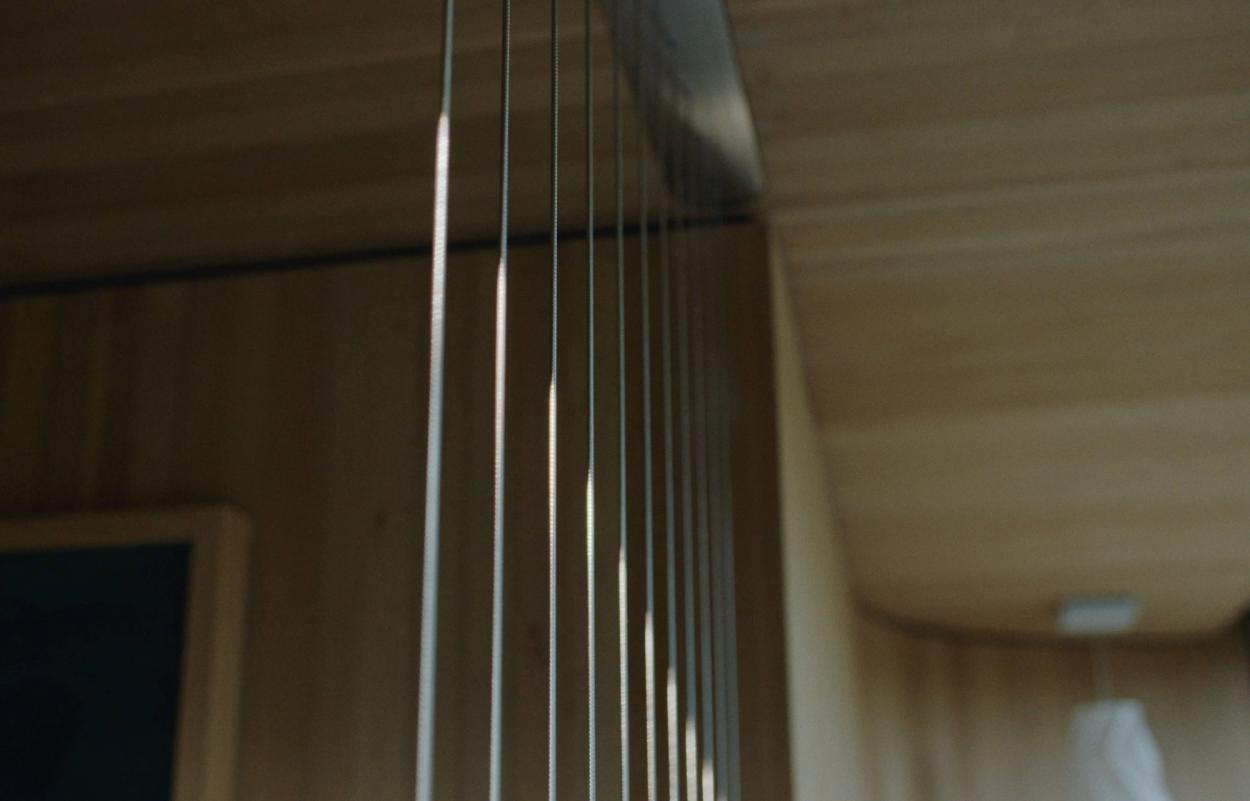
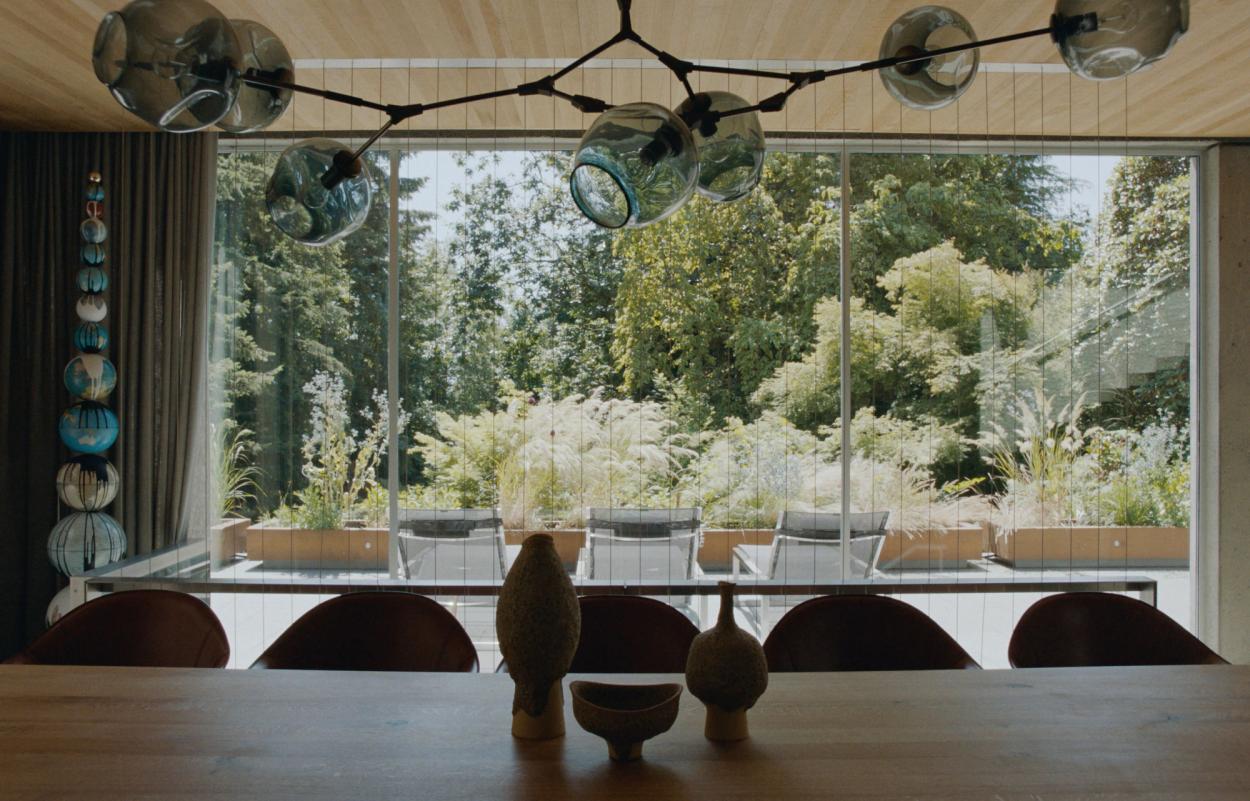
Unfinished fir ceilings were refurbished and reinstated while lit recessed slots between these planes and the structure were updated with LED lighting to replace incandescents. Worn quarry tile was replaced inside and out with limestone tile and pavers. Elm was chosen in a random flitch veneer for its informal feel and tonal suitability with the existing fir while white corian finishes ensured brightness.
The internalized galley kitchen was redesigned to suit family living within a more open plan. A new bathroom and media room were created within the underutilized “back of house” storage and mechanical space. The den space adjacent to the master bedroom and lower stairs has been temporarily converted into a bedroom for young children but new sliding privacy panels can be removed later when the children move upstairs.

The most important challenge for this renovation had potentially significant aesthetic implications. The unprotected structural concrete beams and columns are expressed at both the exterior and interior. This inherently optimistic design decision caused constant water ingress problems that needed to be resolved artfully without flashings so that the overall expression was not altered. Roof terraces are now fully encapsulated by contiguous waterproof membrane. In an effort to retain the expression of the beams at the terrace surface, 5/8” thin custom concrete copings the same dimension as the beams now cover the new waterproofing and trace the timeworn structure below. The terraces are infilled with the new limestone pavers and the grid expression is maintained with minimal intervention.
The design principles for this renovation were meant to always err on the side of subtlety and respect within a reasonable budget and timeframe. Our intention was to provide this icon with the promise of the future as a working piece of architecture, the end result of which is a legendary home updated to suit 21st century needs.
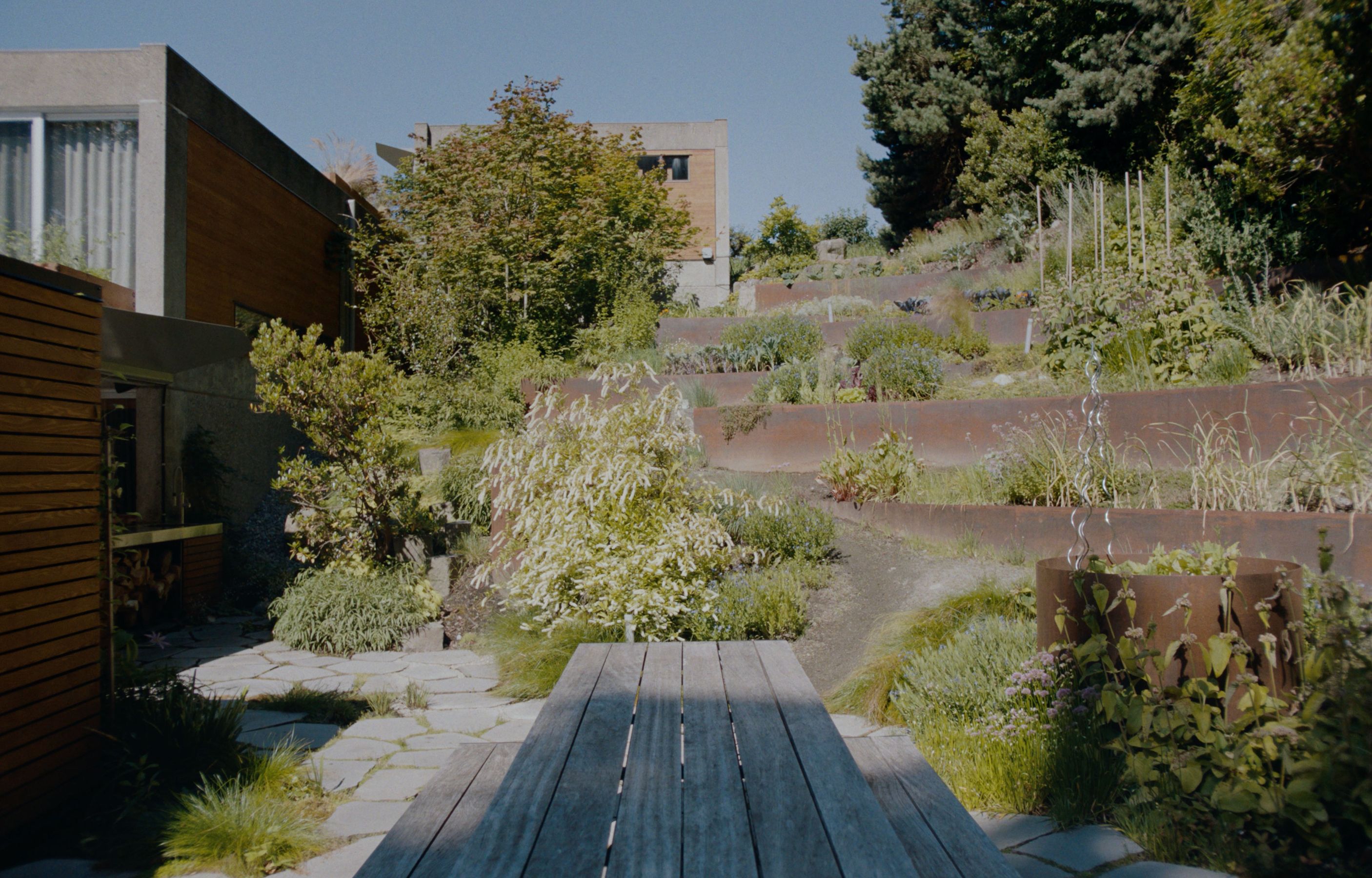
Written by BattersbyHowat in 2015
